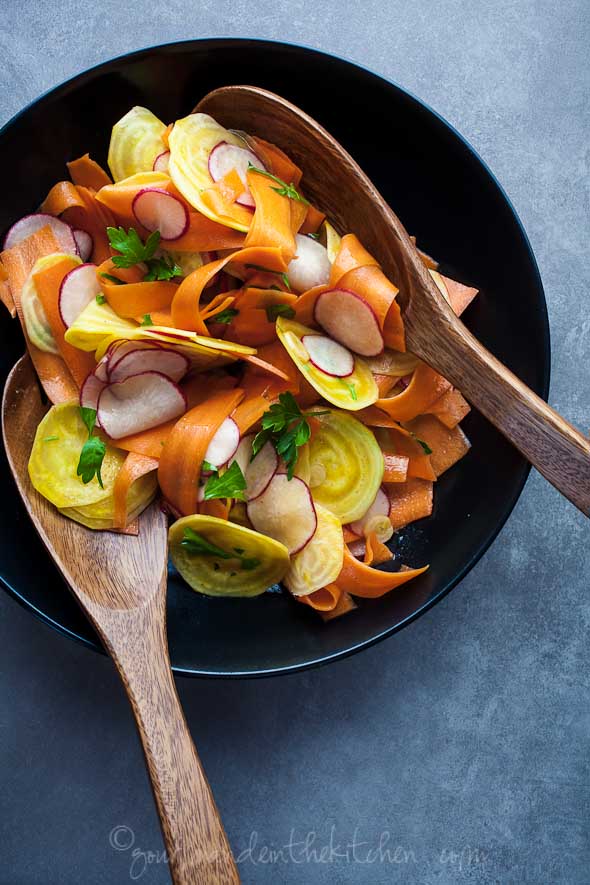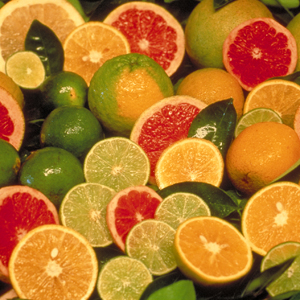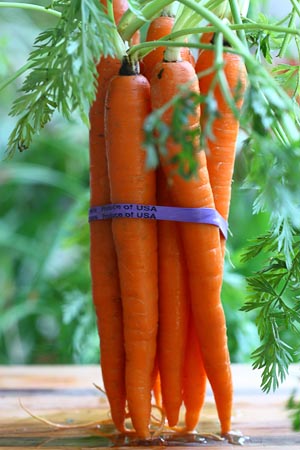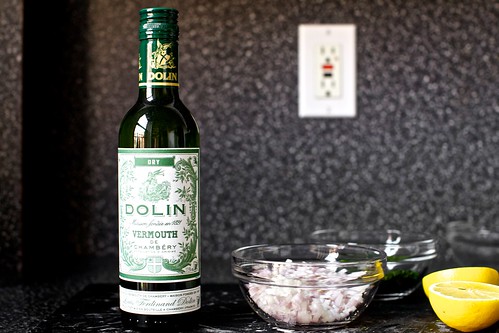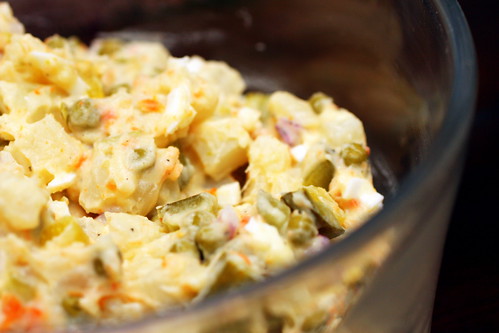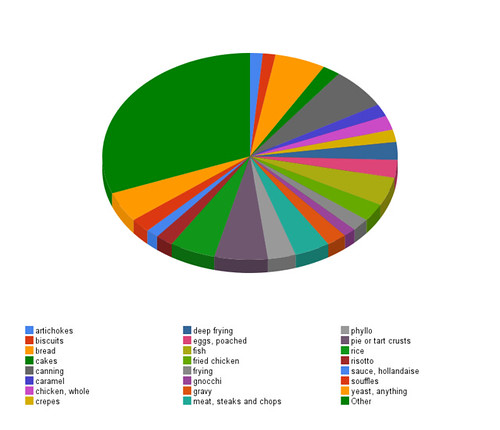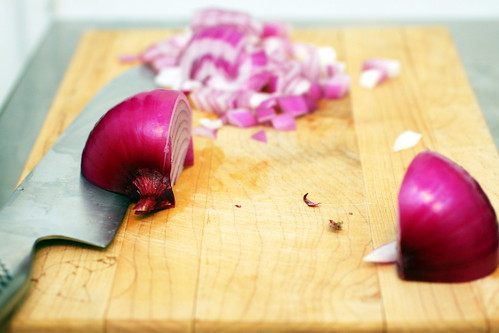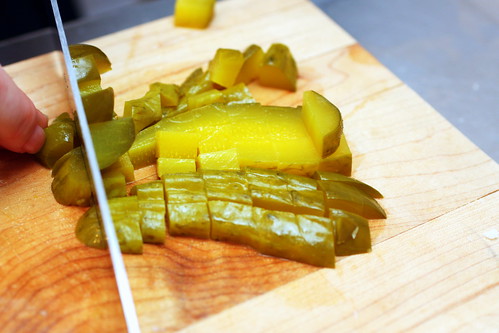Last year, around the time I was pondering starting this blog, I saw Heidi’s Raw Tuscan Kale Salad on her website. It was so unique and tasty looking. Other greens are used in salads all the time, so why not show kale some love too? I’d never even thought of the idea. Kale was always something I saw cooked down with garlic and olive oil, shredded into soup, or, more recently, baked into chips! After reading through this recipe, I realized I had never eaten kale raw! I guess I assumed there was a reason it was rarely used raw, that it would be tough, or too bitter. But the way Heidi described the salad made it seem anything BUT tough and bitter.
So last weekend I decided to make my own raw kale salad! I decided to cut the kale with some raw spinach though to make the flavors a little more mellow, and I added tomatoes and zucchini to give the salad some more heft. For a dressing I created a creamy, tangy, lemony concoction that really stood up to the sturdy greens. I also added a hefty dose of parmesan as well, because who can resist cheese in their salad?
Health Tip: Lots of research has been conducted on the anti-cancer benefits of cruciferous vegetables, such as broccoli and kale. Kale has been shown to be particularly effective in reducing the incidence of colon, breast, bladder, prostate, and ovarian cancers when consumed regularly. Researchers think this is because of the glucosinolates found in kale. When ingested, the glucosinolates are converted by microflora in the gut into anti-cancer compounds called isothiocyanates.
Isothiocyanites are actually the compounds that plants themselves use as protection against pests and the damaging effects of the sun. In humans, they are hypothesized to work in a variety of ways to prevent cancer, but the most well researched is their ability to inhibit the enzyme cytochrome P450 that metabolizes compounds such as benzopyrenes into a carcinogenic compound called benzopyrene diol epozide. Benzopyrene diol epoxide intercalates with DNA, disrupting its double helix structure and causing mutations within the DNA because proper transcription cannot occur when the DNA is in a distorted state. Consuming kale (and other cruciferous vegetables) can help prevent your body from creating these cancer inducing compounds!

sumber dari: eathealthyfeelgood.com/
